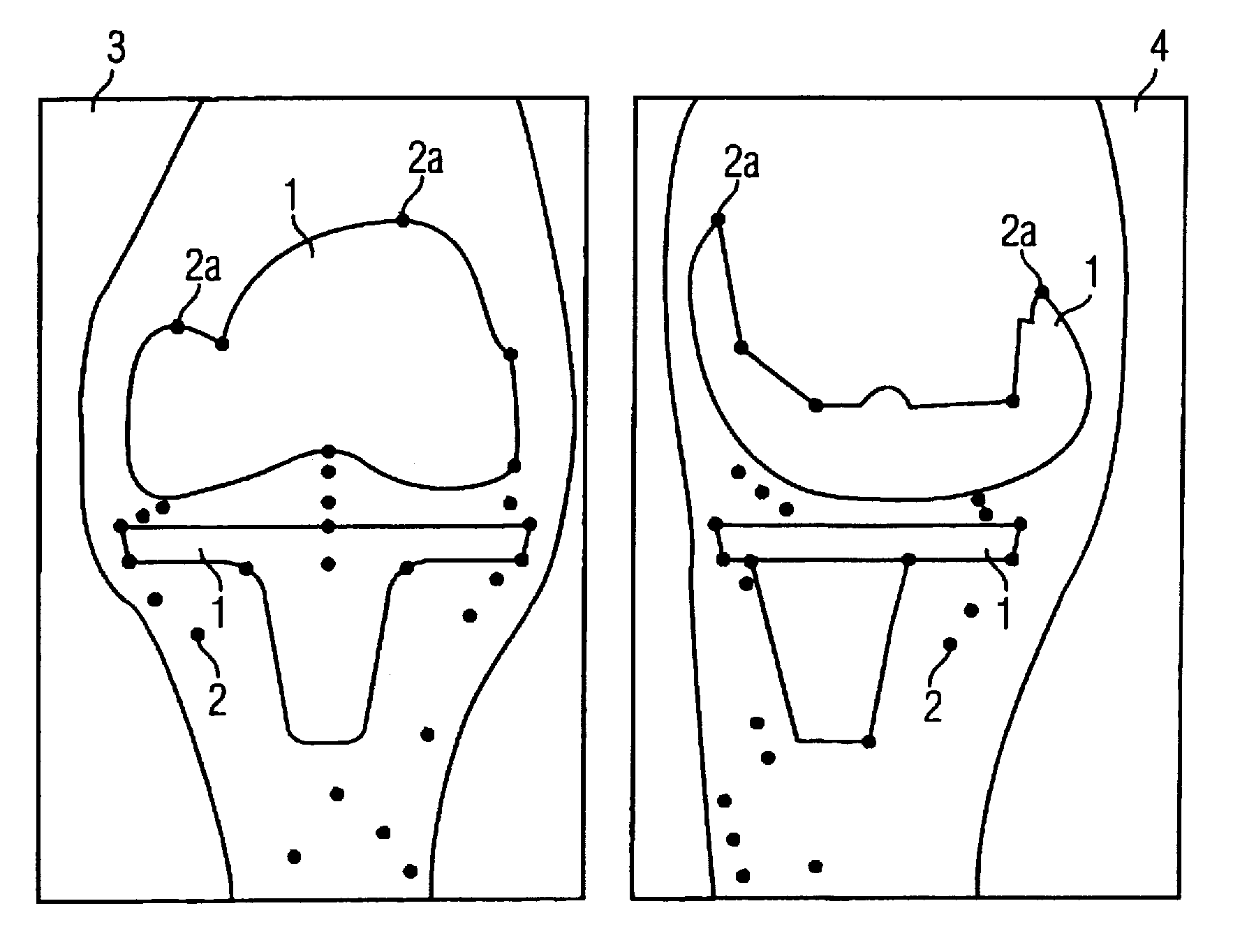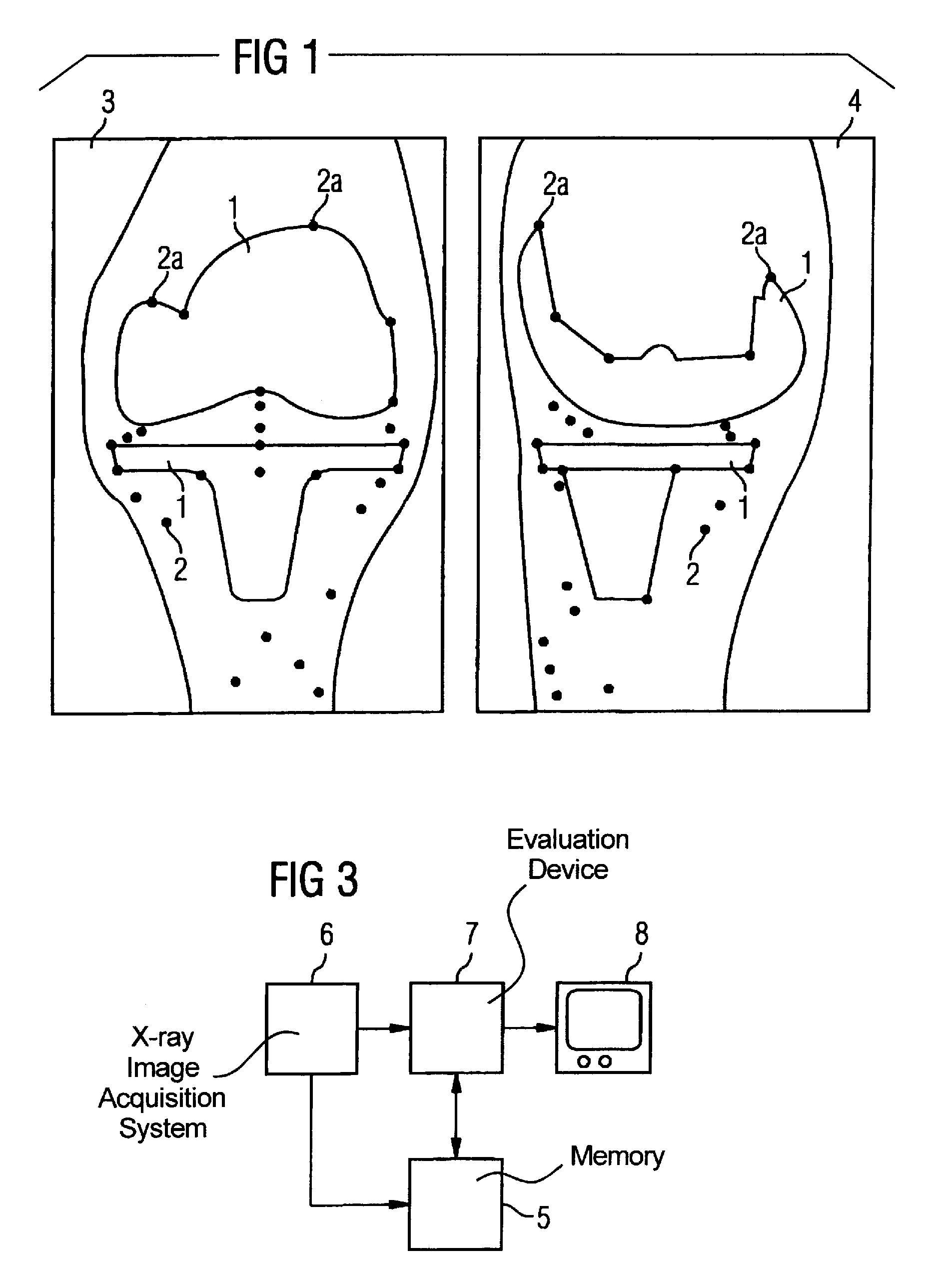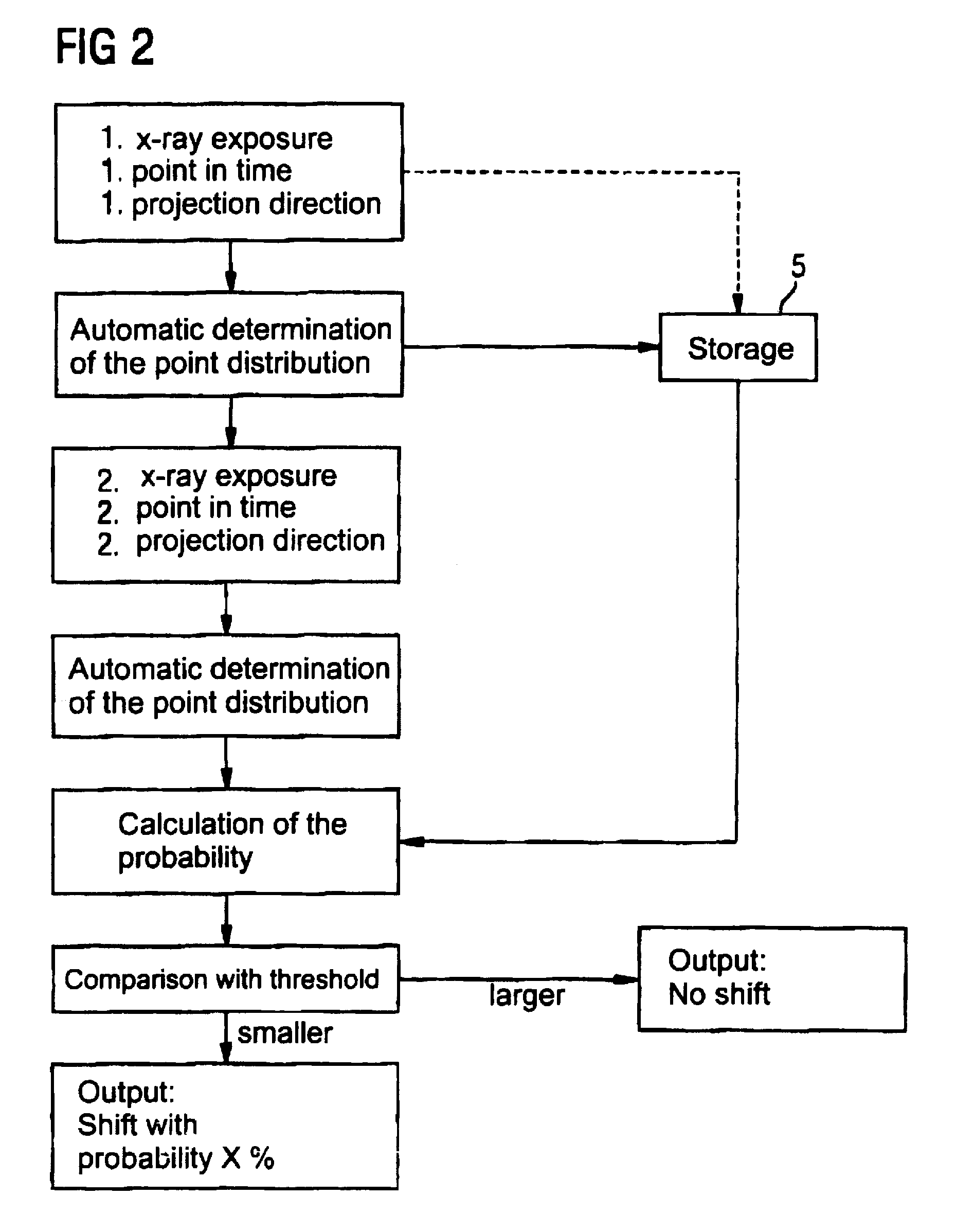Method and x-ray system for detecting position changes of a medical implant
a technology a position change, which is applied in the field of method and x-ray system for detecting the position change of a medical implant, can solve the problems of affecting the patient's life, affecting the patient's comfort, and the patient's stress, so as to reduce the time expenditure associated with post-operative examination, facilitate the necessary post-operative examination, and achieve the effect of very rapid implementation
- Summary
- Abstract
- Description
- Claims
- Application Information
AI Technical Summary
Benefits of technology
Problems solved by technology
Method used
Image
Examples
Embodiment Construction
[0019]FIG. 1 shows an example two 2D x-ray exposures of a region containing an implant, in the present example a joint prosthetic 1 at the knee joint. The x-ray exposures were respectively obtained at different points in time from different directions, in the present example perpendicular to one another. In the x-ray exposures, respectively both components of the joint prosthetic 1 as well as metal spheres 2 (that are used as markers) placed in the bone are recognizable. Due to their placement in the bone, these metal spheres 2 do not change their position over the course of time. If a shifting of the joint prosthesis 1 occurs, this shifting can be recognized by a changed position of the prosthesis 1, or marked points 2a of the prosthesis 1, relative to the metal spheres 2 in the x-ray image.
[0020]In the inventive method, the distribution of the metal spheres 2 as well as marked points 2a are automatically determined both in the first x-ray exposure 3 and in the second x-ray exposur...
PUM
 Login to View More
Login to View More Abstract
Description
Claims
Application Information
 Login to View More
Login to View More - R&D
- Intellectual Property
- Life Sciences
- Materials
- Tech Scout
- Unparalleled Data Quality
- Higher Quality Content
- 60% Fewer Hallucinations
Browse by: Latest US Patents, China's latest patents, Technical Efficacy Thesaurus, Application Domain, Technology Topic, Popular Technical Reports.
© 2025 PatSnap. All rights reserved.Legal|Privacy policy|Modern Slavery Act Transparency Statement|Sitemap|About US| Contact US: help@patsnap.com



